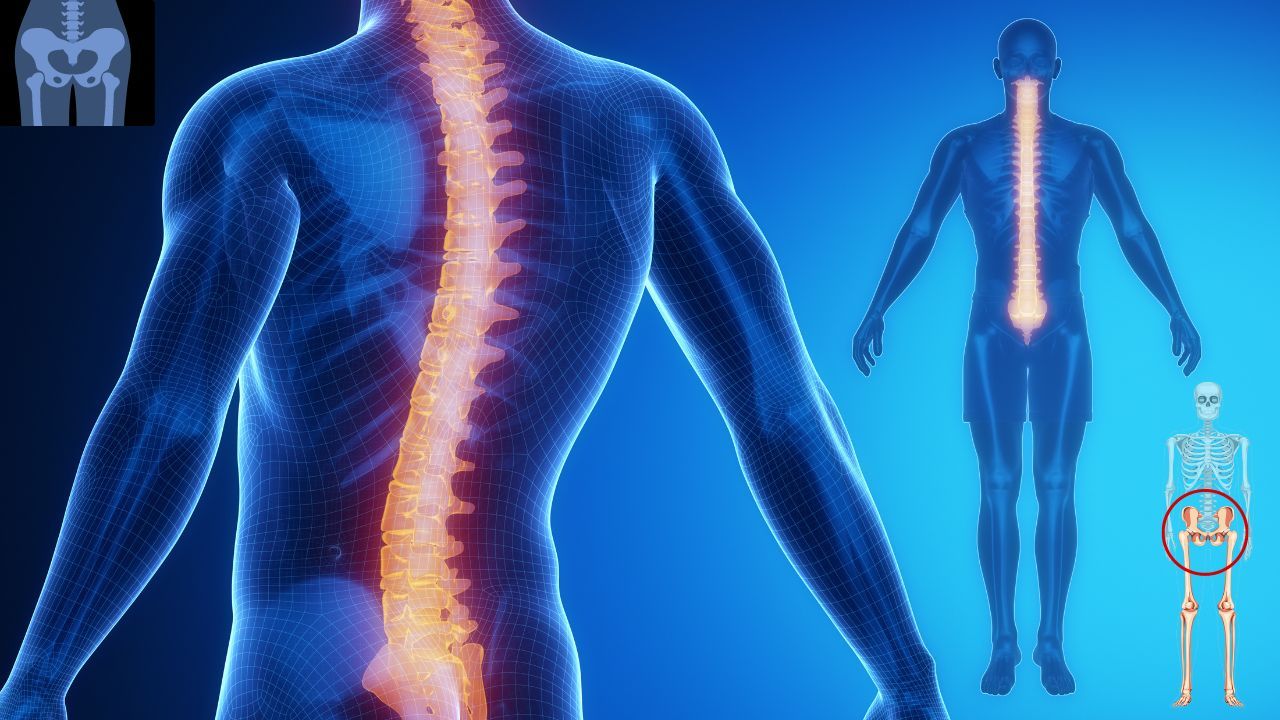Why My Coccyx Pain Won't Go Away?
Struggling with persistent coccyx pain? Discover common causes and effective treatments to help alleviate discomfort and find long-term relief for tailbone pain.

Oh, the woes of a stubborn tailbone! If you've found yourself in a battle of wills with your coccyx – that's right, the elusive tailbone – you're not alone. You've tried sitting differently, shifting positions, and even giving it the silent treatment, but the coccyx pain won't go away.
What are the Causes of Tailbone Pain?
This discomfort, often referred to as coccydynia, can sneak up on you like an unexpected plot twist in your favorite novel. But fear not, dear reader, for we're here to unravel the mystery behind the causes of this not-so-welcome sensation.
This seemingly innocent little structure at the base of your spine can become quite the troublemaker. It might start with a tumble on a slippery floor, a daring skateboard stunt gone awry, or even hours of seated Netflix marathons on that not-so-comfy couch. Suddenly, your coccyx decides it's had enough and starts ringing the pain alarm.
A few common causes of coccydynia include

- Falling
- Repetitive Strain Injury
- Pregnancy or Childbirth
- Underweight or Obesity
- Excessive sitting in the wrong posture
- Cancer
A few indirect causes of coccydynia are:
- Spinal misalignment or Herniated discs
- Tension in the surrounding muscles
Some Common Symptoms of Tailbone Pain
The tailbone pain might radiate, spreading the discomfort to your lower back and even down your legs. It's like a dull sensation or achy but can become a sharpened pain depending on the activity you’re engaging in. It sometimes can't quite decide where it wants to settle, so it roams around, keeping you on your toes. Issues like herniated discs, nerve impingements, or even pelvic floor dysfunction could also be playing their part.
Symptoms like:
- Achy or piercing pain of the tailbone
- Moderate to severe pain while standing up
- Severe pain when sitting for an extended period
- Pain during bowel movements or urination
- Pain during sexual activity
How is Chronic Tailbone Pain Diagnosed?
Sometimes the pain goes away after a few weeks, but if the ongoing saga of tailbone continues, you likely have chronic tailbone pain or coccydynia and should consult your medical professional. Some diagnostic tests can identify the cause of your pain, whether degeneration, fracture, or something else. Generally following tests can help determine the cause of your tailbone.
- X-ray or CT Scan (for fracturing)
- Bone Scan (for inflammation and chordoma)
- Ultrasound or MRI (for inflammation and chordoma)

How is Tailbone Pain Treated?
Once the diagnosis of the cause of your tailbone pain is clear, treatments are available depending on your particular condition. Start with common home remedies all the up to the surgery.
Stage 1: Home Remedies
Some common ways to relieve and prevent the worsening of tailbone pain at home include:
- Take regular breaks and avoid sitting longer
- Loose clothing
- Hot baths help muscles relax
- Using a coccyx cushion when sitting - reduces pressure on the tailbone
- Lower back and pelvic muscle exercises
- Ice and heat therapy - up to 30 minutes

Want To Know More About Coccyx Cushion?
Stage 2: Outpatient Treatments
And let's not forget the mystical art of medical or physical therapies. In this realm, skilled therapists will guide you through exercises and stretches that target your tailbone's well-being. Some other options include:
- Coccygeal Nerve Block
- Massage or Physical Therapy
- Acupuncture - an alternate way to manage pain through your body's meridian
- Transcutaneous Electrical Nerve Stimulation
- Injections of corticosteroids - offering temporary relief from pain and inflammation
Stage 3: Surgery
In rare instances, if your tailbone pain takes on a truly epic form, surgery might enter the storyline. Some cases call for the partial or entire removal of the tailbone – partial or total coccygectomy.
Armed with these tools, you're ready to rewrite the narrative and turn discomfort into a tale of triumph.
Coccyx Pain Won't Go Away
FAQs
Q: How long is too long for tailbone pain?
Answer: While there's no definitive time frame etched in stone, there are a few indicators that might suggest when tailbone pain has lingered a bit too long.
Imagine this scenario: you've been dealing with tailbone discomfort for weeks, and it's becoming less of a passing annoyance and more of a constant companion. If your tailbone pain persists beyond 6 to 8 weeks, it might be time to raise the red flag or if it becomes more intense.
You've tried various at-home remedies, from cushions to exercises, and the pain remains as stubborn as ever? That could be your cue to seek professional advice.
Now, keep in mind that everyone's journey is unique, and what might be too long for one person could be different for another. The key is to listen to your body, pay attention to any changes, and consult a healthcare professional if you're concerned.
Q: Why has my tailbone been hurting for months?
Answer: There are multiple reasons, perhaps you had a fall or experienced trauma that set off a chain reaction of discomfort. Or maybe, your sitting habits and posture have inadvertently antagonized your tailbone, leading to a prolonged ache. Long hours of sitting, especially on surfaces that lack cushioning, might be playing their part in this discomfort drama. Even certain exercises or movements that engage the tailbone area could be involved.
Issues like inflammation, infection, or even musculoskeletal imbalances might have taken center stage, making your tailbone pain a long-running show. And let's not forget about the emotional aspect – stress and tension can manifest physically, and your tailbone might be channeling those vibes.
Seeking professional guidance can help you with healing, understanding, and ultimately bidding farewell to the persistent discomfort.
Q: Can tailbone pain last for 6 months?
Answer: While there's no one-size-fits-all answer, tailbone pain lasting for six months or even longer is not uncommon.
Seeking medical advice, exploring treatment options, and making lifestyle adjustments can all contribute to ushering your tailbone pain toward a resolution.
Keep in mind that everyone's pain journey is unique, and what might be normal for one person could be different for another. If your tailbone pain persists for an extended period, it's advisable to consult a healthcare professional. With their guidance, you can uncover the underlying causes, embark on a path to relief, and bid adieu to your tailbone's long-term residency.
Q: Can coccyx pain be cured?
Answer: Absolutely, the relief is often within reach. Various strategies can help alleviate the discomfort and put your tailbone back on the path to comfort.
The journey to relief might vary from person to person. What works like a charm for one individual might require a different approach for another. This is where the guidance of healthcare professionals shines, as they can tailor a treatment plan specifically suited to your unique circumstances.
Armed with the right tools, knowledge, and support, you're well-equipped to embark on a journey of relief, rewriting the tale of your tailbone discomfort into one of triumph.
Q: Is tailbone pain permanent?
Answer: The mystery of whether tailbone pain is a permanent resident or just a temporary visitor can indeed be puzzling. But fear not, for the answer isn't always set in stone.
But here's the good news – tailbone pain doesn't have to be a life sentence. In many cases, with the right approach, treatment, and care, the discomfort can be managed and even alleviated.
While it's true that some individuals might experience ongoing challenges, it's equally true that relief is often attainable. So, whether your tailbone pain is a brief chapter or a longer tale, remember that you're the protagonist in this narrative. Armed with knowledge and support, you have the power to influence the outcome and ensure that your tailbone's story is one of triumph over discomfort.
Key Takeaways!
In the realm of coccyx discomfort that seems relentless, remember that your story is far from over. While the persistence of tailbone pain can test your patience, it's not an invincible foe. The key lies in understanding that your tailbone's journey is unique, and relief is attainable through a combination of expert guidance, tailored treatments, and your active role in managing the discomfort. Embrace the power of seeking solutions, making adjustments, and collaborating with healthcare professionals to finally bid farewell to the unwelcome guest of prolonged coccyx pain. As you navigate this narrative, know that you have the strength to turn the page, leaving behind a tale of triumph over persistent discomfort.
Sponsored By

